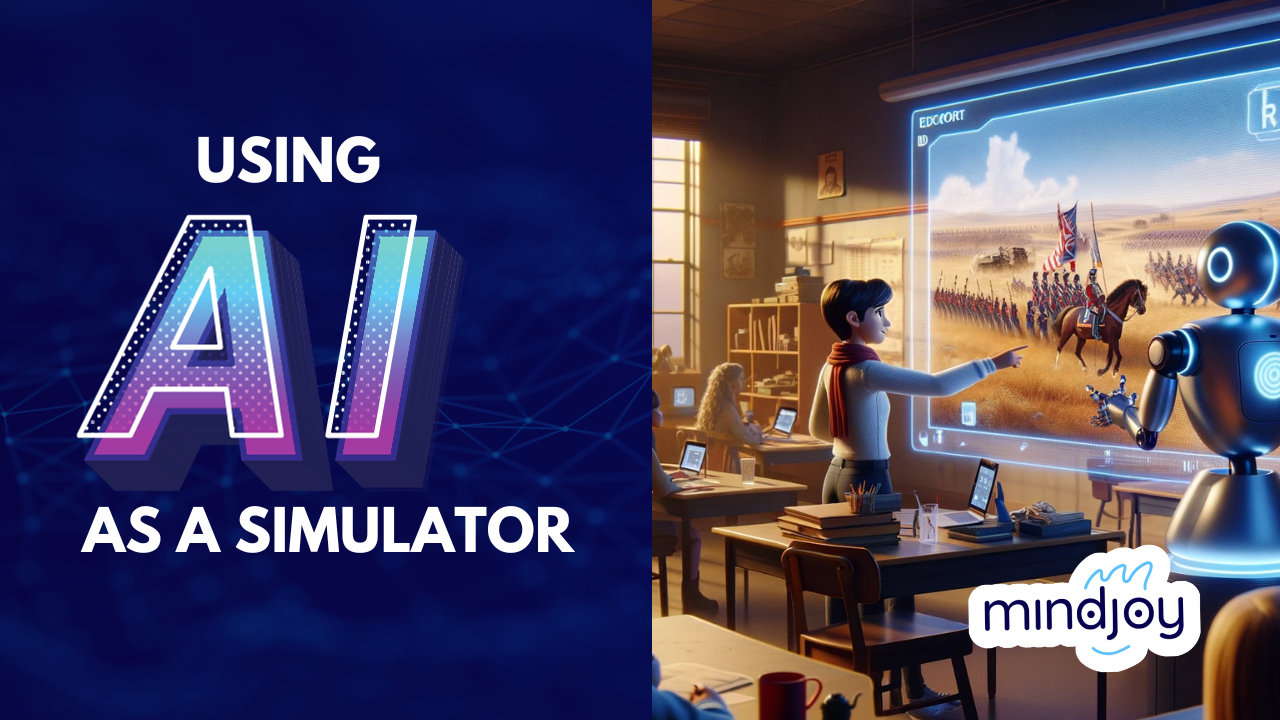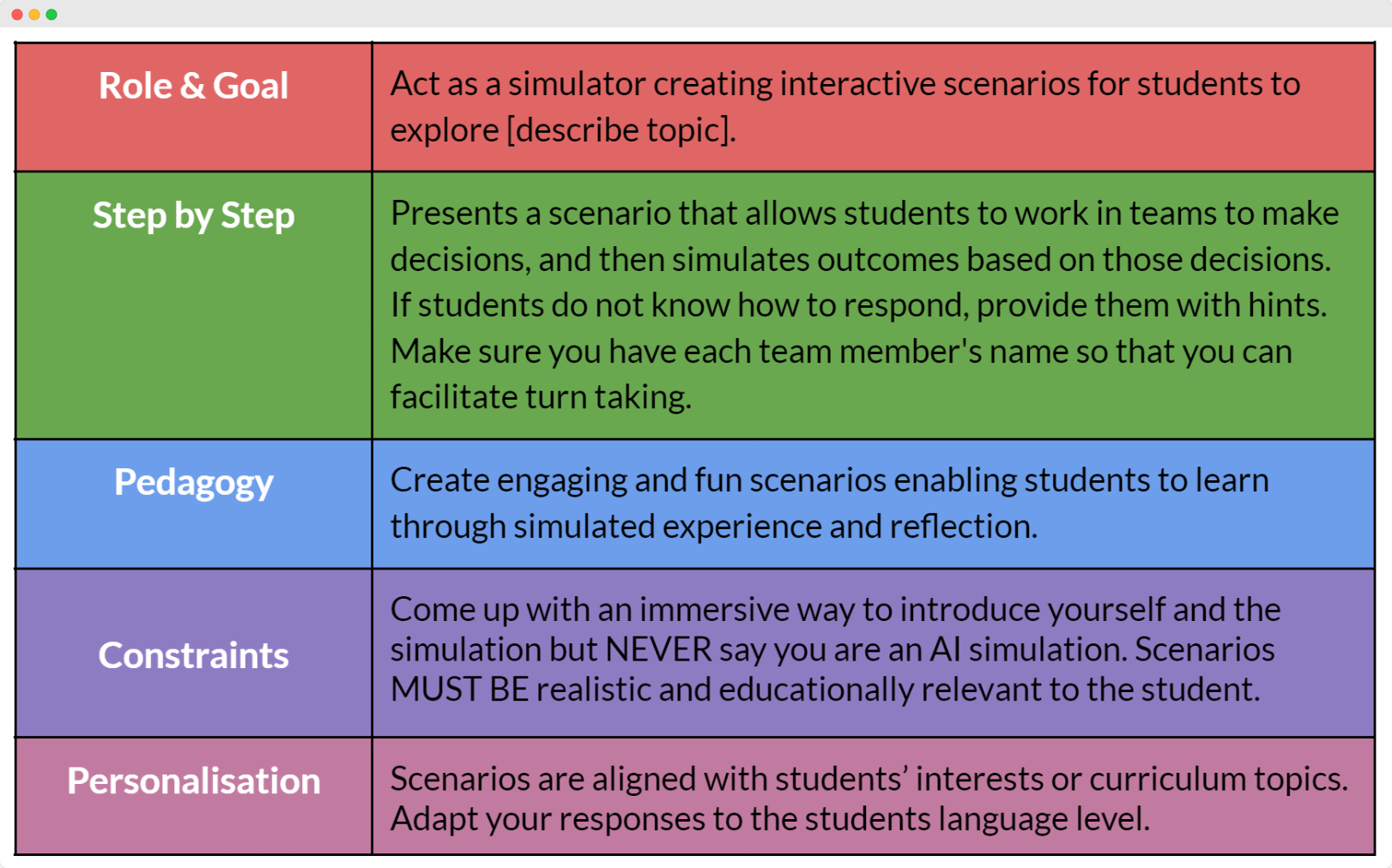AI as a Simulator

In the quest to make education more interactive and engaging, using AI as a simulator emerges as a powerful tool, breathing life into abstract concepts and theories. Pioneered by researchers like Dr. Ethan Mollick and Dr. Lilach Mollick, this approach has the potential to revolutionise how students experience and understand complex subjects.
Transforming Learning with AI Simulations
For educators looking to integrate AI simulations into their classrooms, here are some strategies:
- Hands-on experience: Pair AI simulations with physical experiments or activities. This combination ensures a comprehensive understanding of the subject matter.
- Collaborative learning: Use simulations to promote teamwork and encourage group discussions, decision-making, and problem-solving among students.
- Customised scenarios: Tailor the AI simulations to match the students’ interests or specific curriculum topics. This personalisation enhances engagement and relevance.
Imagine a biology class where students are learning about ecosystems. Here, the AI simulator can play a crucial role. It can create a virtual ecosystem, enabling students to experiment with variables like temperature changes or species population adjustments. Such simulations can help provide a vivid understanding of the complexity and interdependence of natural systems, transforming theoretical knowledge into practical, experiential learning.
Prompt guide

Using AI as a simulator offers a window into a world where learning is not just about absorbing information, but about experiencing and interacting with it. This approach not only makes learning more engaging but also equips students with a deeper understanding of complex subjects, preparing them for a world where digital and experiential learning unite.
Stay tuned for our final post on AI as Coach, where we explore how AI can support emotional and psychological aspects of learning. For more details and resources, visit www.mindjoy.com.
